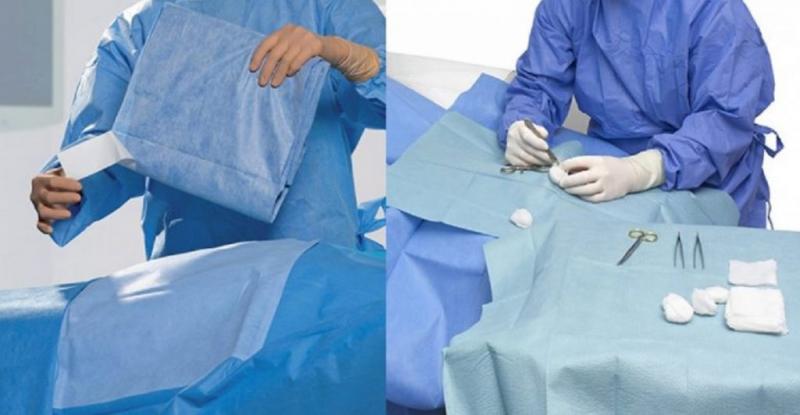The healthcare sector deals with some of the most sensitive issues related to human health and well-being. Therefore, every aspect of healthcare facilities, from infrastructure to equipment and materials used, needs to meet stringent standards of safety, hygiene and quality. One area that plays a crucial supportive role is healthcare fabrics – the textiles used in hospitals, clinics, nursing homes and other medical settings.
Advancements in Healthcare Fabrics
Over the years, there have been significant advancements in the development of specialized fabrics catering to the unique needs of the healthcare industry. Traditional fabrics like cotton, polyester and others are now enhanced with advanced functionalities. Many new natural and synthetic fibers with superior moisture-wicking, anti-microbial, flame-retardant and easy-clean properties have been introduced.
Some key developments include the use of silver-based fibers that release silver ions with natural anti-microbial properties. Silicone-coated fibers are now used that have extraordinary liquid repellency and quick-drying characteristics. Technologies like nanotechnology have helped fabricate textiles with nano-scale treatments that stop the growth of microbes. Many flammable materials are replaced with inherently flame-retardant alternatives meeting strict safety standards.
Meeting Regulations and Certifications
For any fabric to be used in healthcare settings, it needs to comply with international regulations and obtain mandatory certifications. Some of the prominent certifying agencies and their key criteria include:
– FDA (Food and Drug Administration, USA): Restricts the use of potential allergens or irritants. Certifies fabrics do not release harmful chemicals.
– ISO (International Organization for Standardization): Issues ISO certifications covering flammability, colorfastness, tensile strength and dimensional stability for healthcare textiles.
– BS EN ISO (British Standards): Certifies sluice/clinical washroom curtains and drapes against flammability, colorfastness to water and microorganism test.
– Fire Resistance: Fabrics need to pass rigorous tests to be flame-retardant as per NFPA 701 (National Fire Protection Association) or California Technical Bulletin 117.
Only those Healthcare Fabrics that fulfill multiple regulatory benchmarks can safely be deployed in healthcare facilities across the world. This ensures high product quality, reliability and end-user safety.
Uses of Healthcare Fabrics
With the diversity of textiles available today, healthcare fabrics play a pivotal supporting role and find applications across various areas:
Patient Gowns and Garments: Specially designed fabrics are used for patient gowns, uniforms and under-blankets providing mobility, breathability and comfort. Hydrophilic fibers absorb sweat and dry quickly.
Bed Linens and Mattresses: high-performance fabrics are preferred for maximum protection against fluids, bacteria and ease of cleaning. Alternatives to cotton are commonly used.
Curtains and Drapes: Fabrics with inherent flame-retardancy and anti-microbial traits are ideal as curtains partition patient areas or in operating rooms.
Upholstery: Flame-retardant, antimicrobial and easy-clean fabrics are selected for chairs, beds and other upholstery ensuring hygienic premises.
Wall Claddings: Impermeable, seamless, washable and durable wall fabrics deliver hygienic surfaces resistant to damage from daily disinfection.
With the diverse applications across various healthcare facility touchpoints, selection of appropriate fabrics plays a crucial role in preventing infections and maintaining a hygienic environment. It also boosts patients’ confidence by providing a clean, safe and cared-for ambience during treatments and recovery.
Sustainable Options gaining Importance
Increasingly, manufacturers are also focusing on developing sustainable and eco-friendly options for healthcare fabrics. Some notable green alternatives include:
– Natural, organic or recycled fibers: Bamboo, hemp, SeaCell, Tencel and others offer breathable alternatives to petroleum-based synthetics.
– Low-impact dyes: Environment-friendly dyes that don’t harm land or water during production.
– PFC/PFOA free: Fabrics free from perfluorinated compounds hazardous to health and environment.
– OEKO-TEX and GOTS certifications: Ensuring products are devoid of any harmful chemicals right from raw material stage to final production.
As more facilities shift to greener healthcare models, sustainable fabrics will play a key role by reducing carbon footprint alongside fulfilling all medical-grade criteria. A circular fabric economy with reuse, recycling and environment-friendly options will be the future trajectory of this evolving sector.
Healthcare fabrics have revolutionized over the years to support the modern medical industry through advanced functionalities, stringent safety regulations and new sustainable alternatives. With constant innovations, they will continue transforming various healthcare surfaces into hygienic zones promoting wellness, confidence and peace of mind for patients as well as staff. Selection of appropriate medical-grade textiles customized for diverse applications ensures facilities deliver best quality care in safe, clean and nurturing environments.
*Note:
1. Source: Coherent Market Insights, Public sources, Desk research
2. We have leveraged AI tools to mine information and compile it


